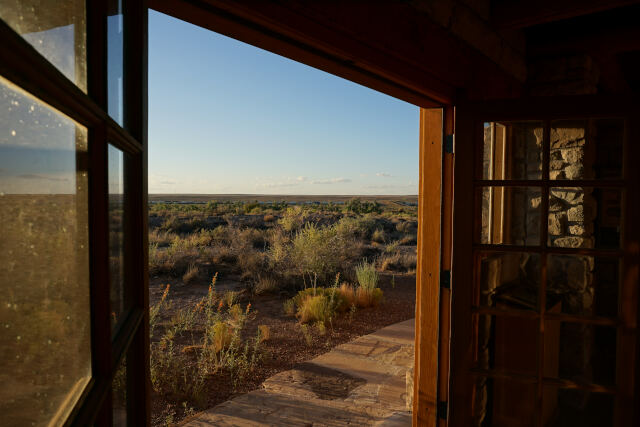
Introduction
I visited Petrified Forest National Park for the first time in years last weekend. I figured it would be a nice day trip to unwind from work and classes. Wood petrification is a natural process where, over millions of years, the organic material in buried wood mineralizes and forms beautiful crystal patterns. While there is petrified wood all over the US, and in many countries around the world, Petrified Forest National Park has the highest concentration of it anywhere hence the designation.
Getting There
The park is sandwiched between US-180 on the south and I-40 on the north. If you’re traveling west from Albuquerque, you should enter from the north side of the park and leave from the south and vice versa if you’re traveling east from Flagstaff. I-40 and US-180 are both very scenic drives.
Right as the US-180 meets the park road, there are a few unaffiliated gift shops selling standard tourist trap fare. What was pretty cool though, was the yard of junked cars parked out front with various Route 66 and Arizona-related bumper stickers on them.
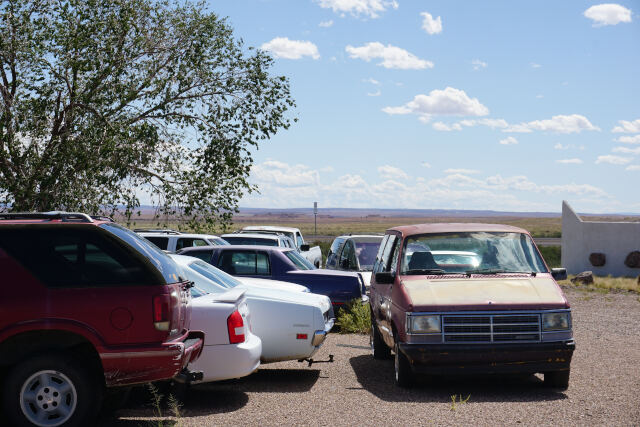
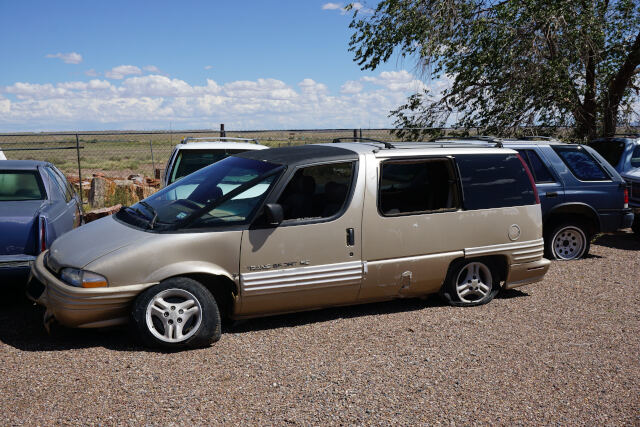
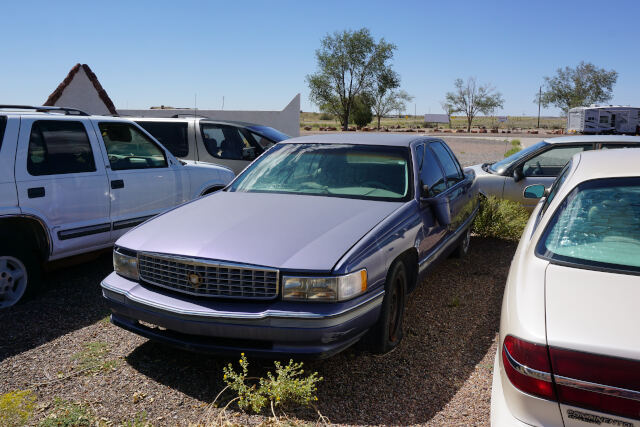
Of particular interest to me, though, was the Mazda Protegé. It was the newest car out of the lot, and didn’t seem to have much rust. The body and interior were in great shape. I almost thought about asking the gift shop if they’d be willing to sell it. Given the spray-painted black hood and aftermarket exhaust, I’m assuming it was redlined into the ground and the transmission died. I’ve had my eye out for one of the Mazdaspeed Protegés, but they’re becoming exceptionally rare and the turbocharged FS engines are notorious for blowing holes in their blocks.
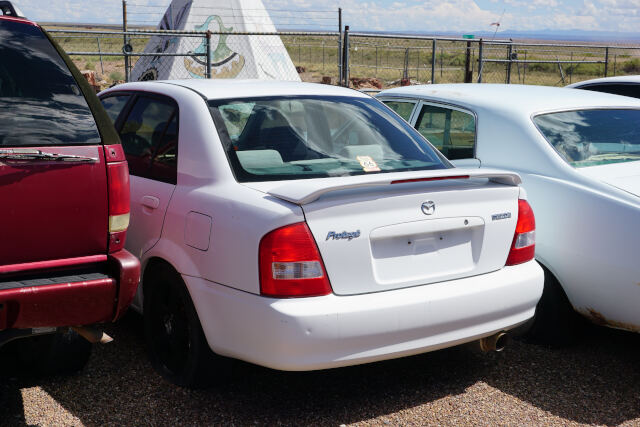
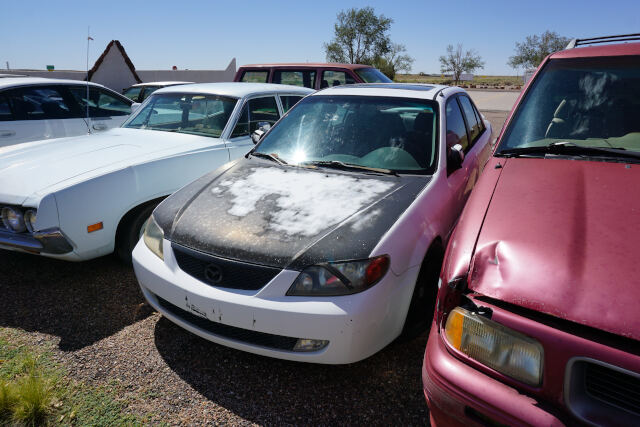
I feel bad for them, given how many of the cars are borderline collectible at this point, but it’s not a bad view for a final resting place.
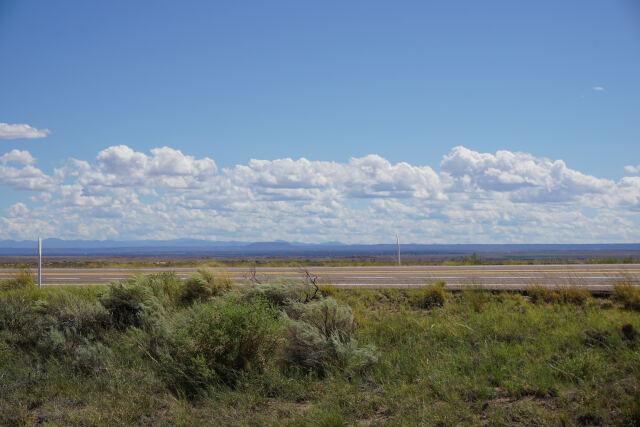
Painted Desert Museum
At the south side of the park, the main visitor’s center is the Painted Desert Museum.
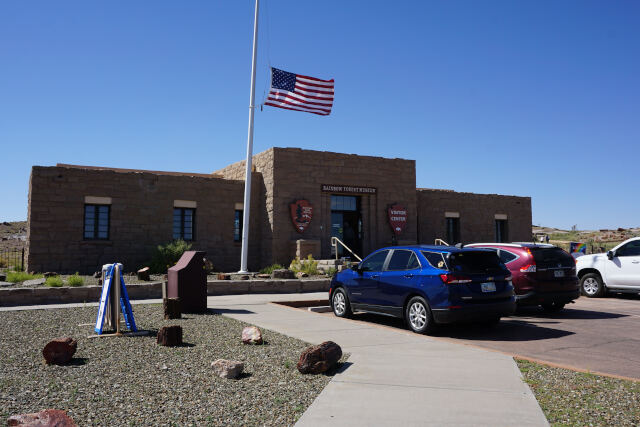
The museum has a number of great displays, fossils, and guides that go into detail on the geological and paleontological history of the park. However, my favorite exhibit is their supposed “wall of shame.” My mom had mentioned this to me and I thought she was joking. However, there were a few letters from people who had stolen petrified wood from the park and sent it back with an apology believing that it had brought them bad luck.
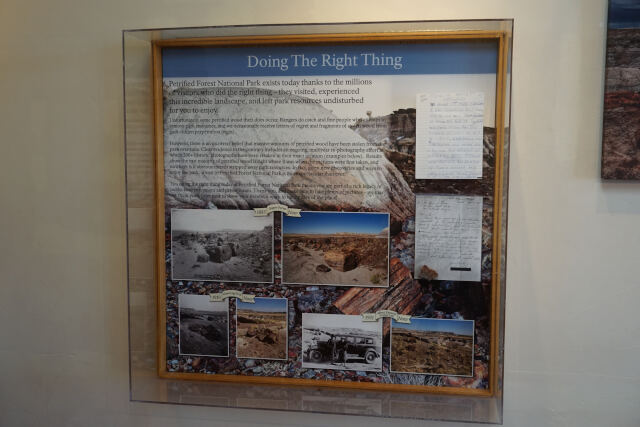
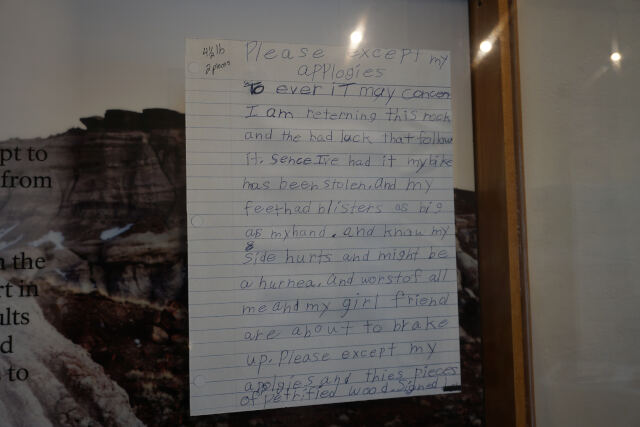
A ranger explained to me that, in Navajo folklore, the petrified wood are the bones of an ancient monster and carry a minacious image in their culture. He said that theft is still a problem, with some people being as gratuitous as to enter the park in box trucks and try to leave with boulder-sized pieces of wood.
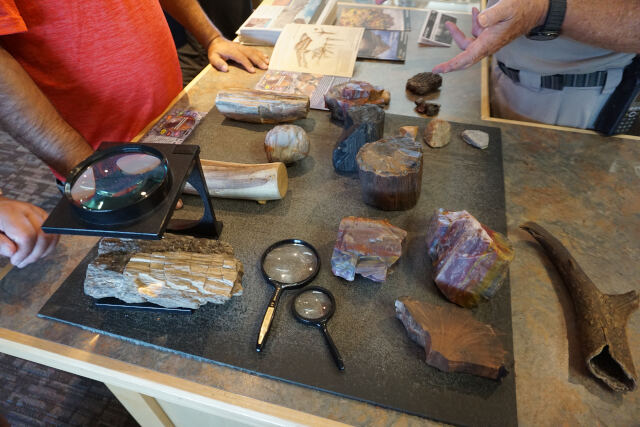
Out the rear doors is a short walking path that takes you through some of the largest pieces of petrified wood in the park.
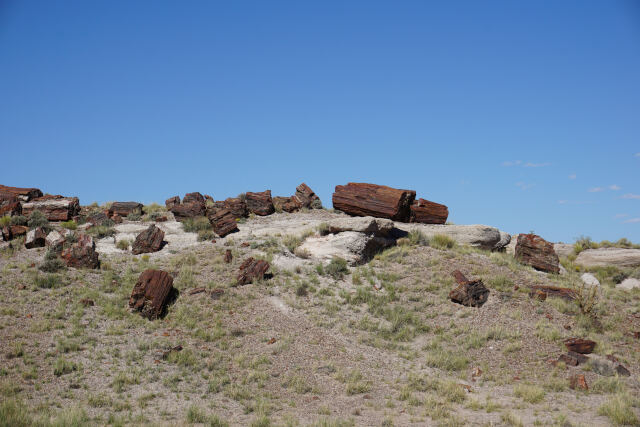
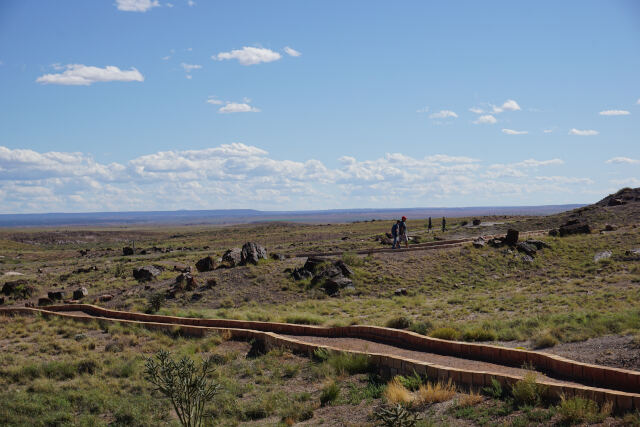
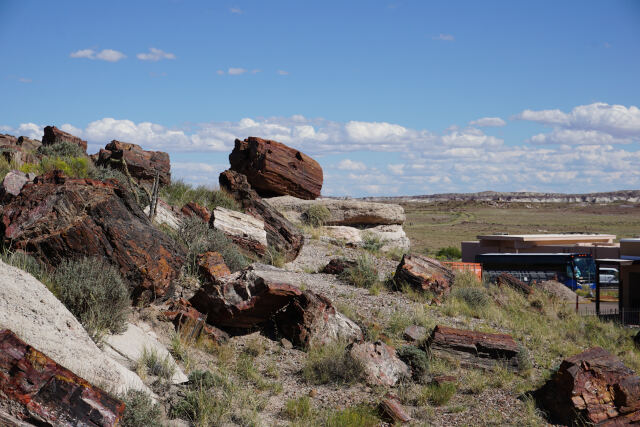
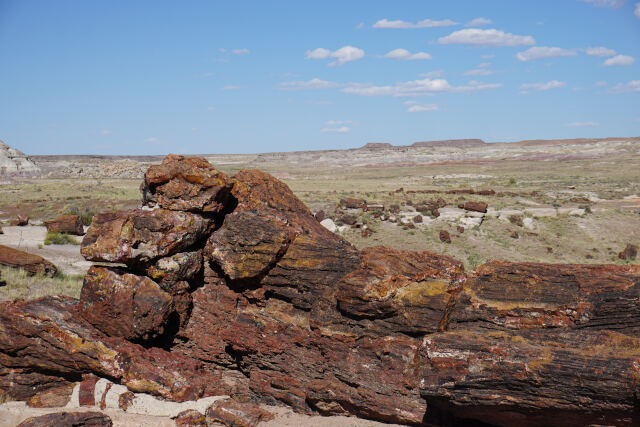
Just east of the visitor’s center on the other side of the parking lot is a small gift shop and fountain. I stopped in to grab a soda. For a place in more or less the middle of nowhere, it was well-stocked and the prices weren’t bad.
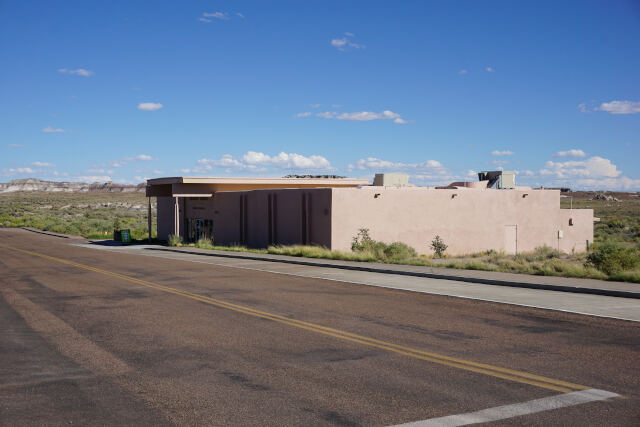
Crystal Forest
My first stop after the visitor’s center was the Crystal Forest, a small 1 mile loop trail that takes you through one of the most petrified-wood dense areas of the park.
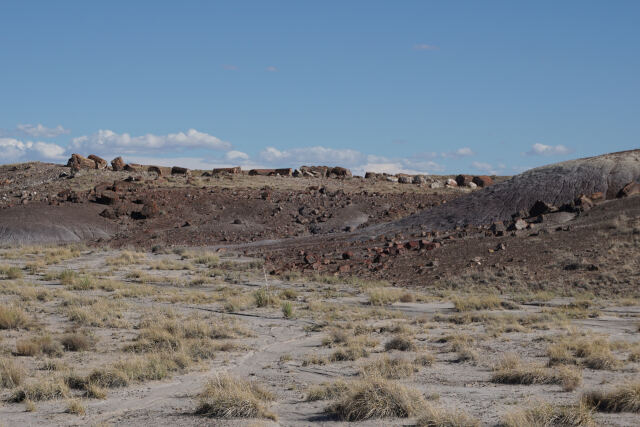
The trail had some pretty stunning views of the surrounding desert. I never really realized how flat this part of northeastern Arizona is. The weather was clear, and you could see for miles.
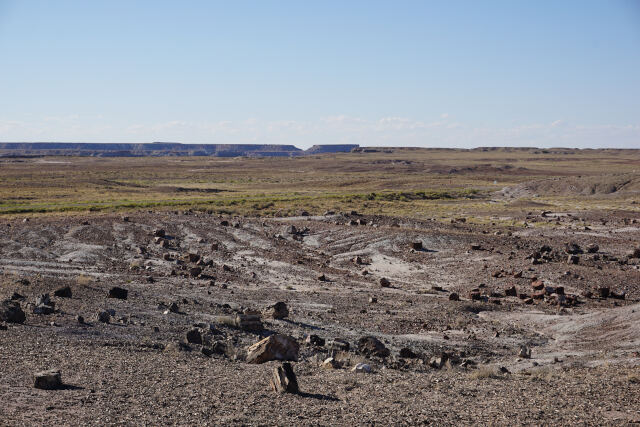
The pieces of petrified wood all have unique patterns, colors, and crystal structures. The colors are largely down to their mineral content, and can be dated using what geologists know about the park’s history and many sediment layers.
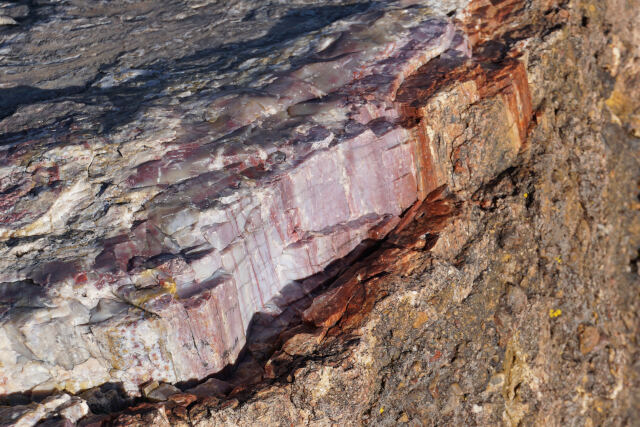
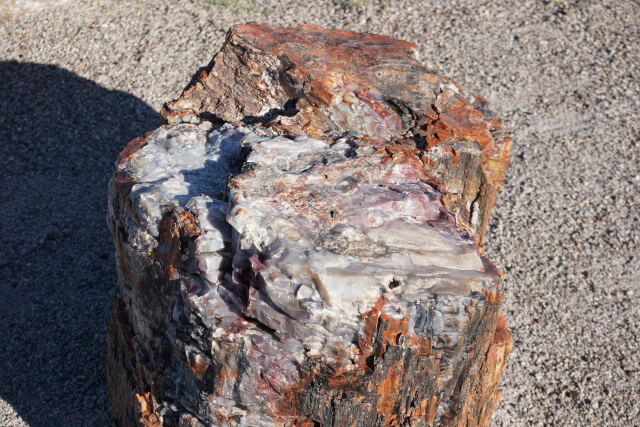
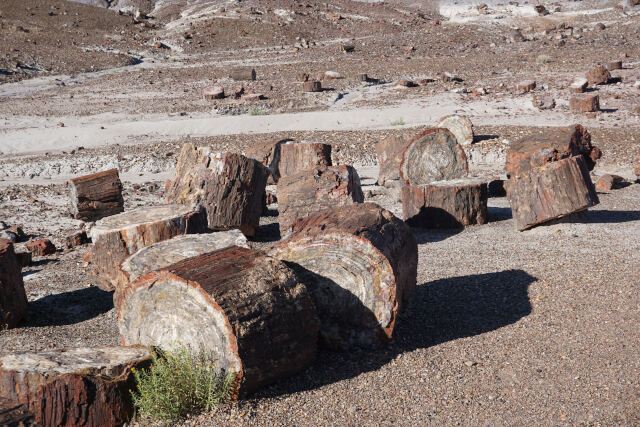
The natural stresses in the petrified wood cause it to break over time into sometimes perfect “slices.” It’s pretty cool to think that this is more or less how the tree fell hundreds of millions of years ago.
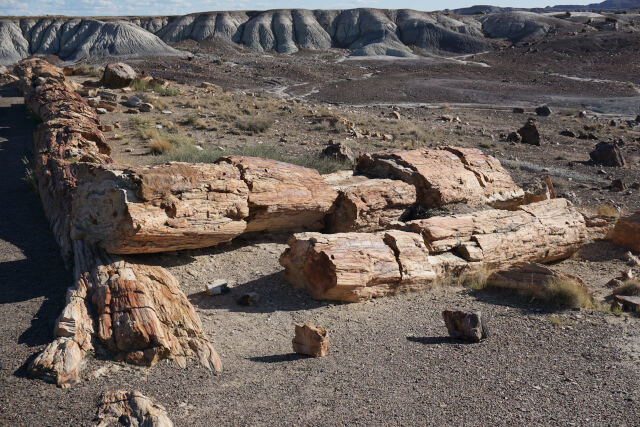
As you walk back to your car, you’re given a friendly warning. Not pictured is the “violators will be shot” sign a few dozen yards ahead of this one.
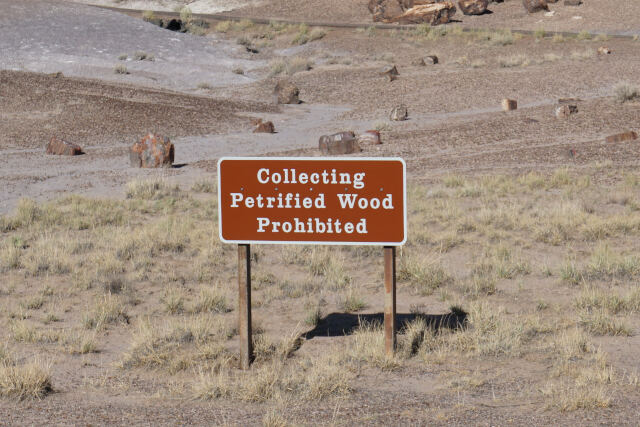
Blue Mesa
A few miles north of Crystal Forest is a turn-off for the Blue Mesa scenic loop. The drive takes you into a small plateau of uniquely colored blue hills. I do not remember the exact geological explanation, but I believe this layer had less iron or was buried quickly by a volcanic eruption so it did not have much time to rust and oxidize.
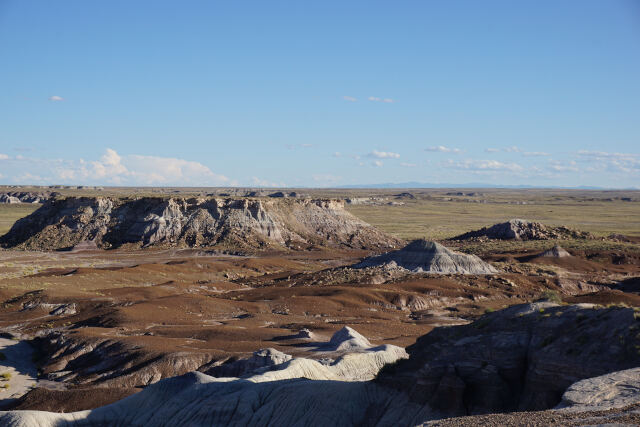
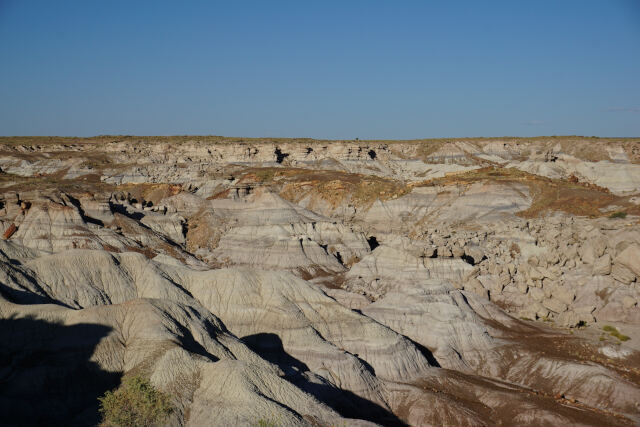
Once again, it really is hard to put into words just how far you can SEE. Living in Phoenix, I was always so used to their being some sort of smog or haze on the horizon but it was just so clear.
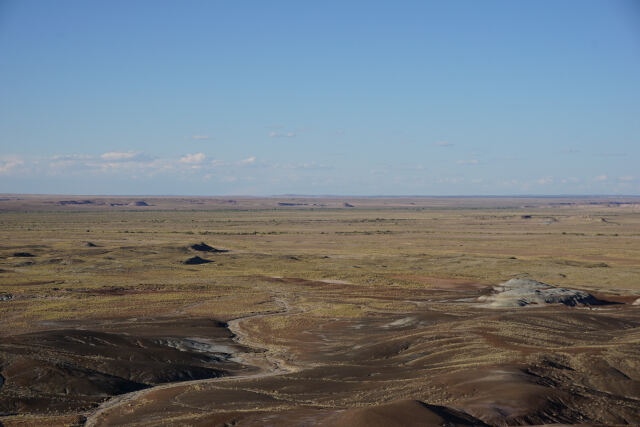
Puerco Pueblo
The last place I stopped was Puerco Pueblo, the ruins of a small Native American settlement. The area is apparently one of the longest continuously inhabited places in North America.
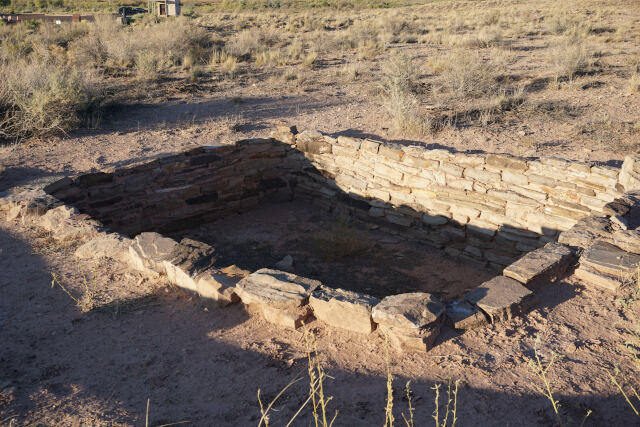
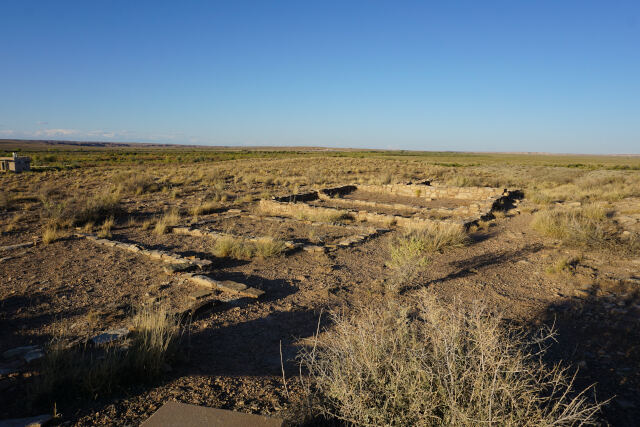
At its peak, the settlement had 20-something rooms and was built much like an apartment building of today. It had a central courtyard and multiple floors with interconnecting rooms. On the rocks just down the hill are various petroglyphs of people, animals, weather, and other elements.
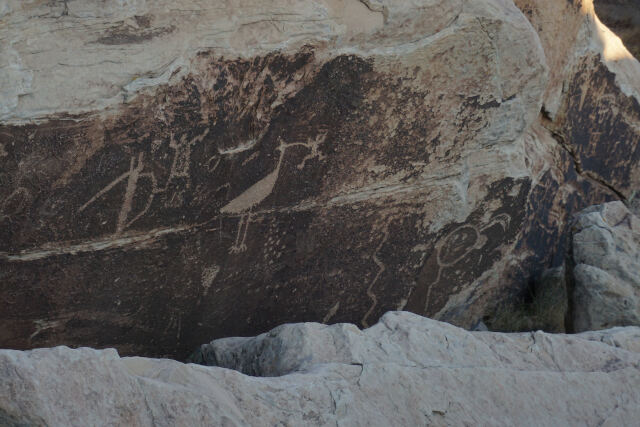
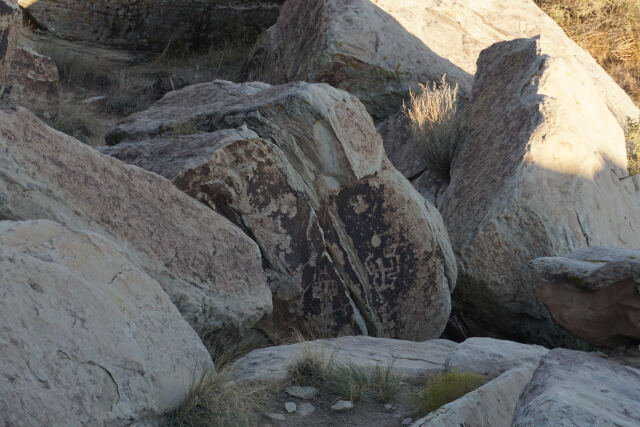
What was once an old visitor’s center for traffic from Route 66 is now a small museum of sorts with exhibits about the Puerco Pueblo and FDR’s new deal. As part of the New Deal's many public works projects to boost the economy after the Depression, men worked to build bridges, plant trees, and maintain the railroad. It was a great place to watch the sunset.

Closing Thoughts
Unfortunately, since I arrived at the park pretty late and the sun was beginning to set, the visitor’s center and hotel on the north side of I-40 had already closed. However, there were a few lookout points where I was able to get some really nice views of the layered, colorful north sections of the park.
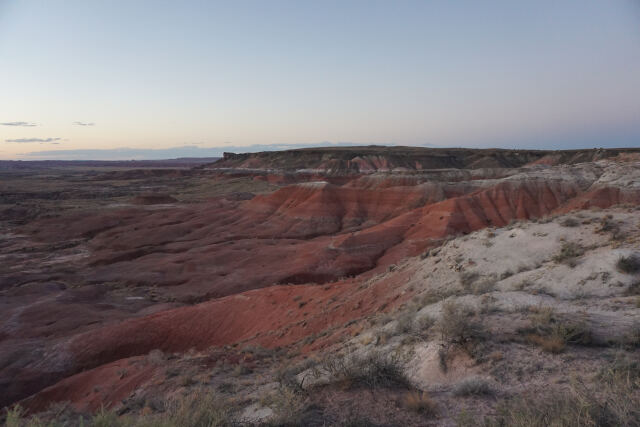
While it was kind of disappointing to miss the northern visitor's center, overall I got a lot out of the southern section and enjoyed my trip. If I’m ever going east on I-40, I’ll probably stop by again to finish things out.